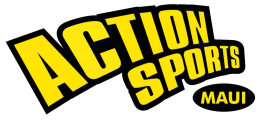Protected: Kiteboarder Bar Technique
Control Bar Technique Kite Bar setup and Kiteboarder Bar Technique needs your respect and undivided attention. Preparing to launch is a serious time, and can make or break your session. There are many basic mistakes that people make, that can easily be corrected. Here is a checklist of the Good and the Bad, so you know “What to do, and What Not To Do”!! Prepare to launch Preparing to launch is a serious time where you get to check over all your gear especially your control bar. The success of your launch and your session depends on your control bar setup and handling. There are many basic mistakes that can be avoided if you know the correct Kiteboarder Bar Technique. Sloppy Kiteboarder Bar Technique leads to accidents and loss of kite control. Do not rush the pre-flight check, it…
Protected: Kiteboard Jump Technique
Kiteboard Jump Technique Learning to jump is easy if someone shows you how. Snowboarders and surfers may have some crossover when learning the jump. There are several components of the jump, the board steering, the body position, the sheeting of the kite, and the timing. You may want to practice the body positions in front of a mirror until you get a smooth , action down, try to visualize the jump, and if possible pay close attention to others jumping. Watching a video in slow motion can help, (if you know what to look for). In the blink of an eye: When you watch a kiter jump, it happens quickly and you may not see all the actions that go into the jump. Even experienced kiters cannot tell you exactly what they do, because they just learned by muscle…
Online Education
Online Education The Online Education system, is a series of knowledge based courses that you can take online. These courses are designed to be a complimentary part of the kiteboarder’s learning path. Regular kiters, as well as instructors can take courses to improve their knowledge, some courses are free to members, you will need to log into the Online Education area to access these courses. There are many different courses available and more being added all the time. There courses will make you more knowledgeable, and may improve your safety and enjoyment of the sport.
How to Read a Weather Map
HOW TO READ A WEATHER MAP by David Dorn “Weather Maps may seem confusing when you first see them. But you can learn the basics easily. The information they contain helps us to understand the current weather picture and to make future weather predictions. Just looking out your window only tells you the immediate weather in your local spot, but it cannot tell you what changes to expect like the coming of a storm, or the possibility of surf arriving in a few days. Weather Maps look at a large area and show the large weather systems that are moving toward your area. Come with me as we take a look at How to read a weather map”. Aloha, David Dorn Weather maps contain information about atmospheric pressure, fronts, storms, and wind speeds and wind direction. The areas of different…
How Waves are Made
How Waves are Made “Understanding the elemental forces that create our ocean waves, and the processes that deliver the surf to our beaches will help you to better appreciate the different surf conditions that exist, and to better participate in ocean surfing sports. Wind, weather, tides, and land-forms all have their effect on the types of wave that we experience at the shoreline. Lets take a look at the basics of How waves are Made”. Aloha, David Dorn. Ocean Waves Formation: Ocean waves are usually formed by a distant wind. Usually storms generate strong winds that act on the ocean’s surface for several days. The strength of the wind, and the duration it blows have a factor on how the resulting waves will be. The area which the wind affects the surface is called the fetch. The larger the fetch,…
Surfing 201
Beyond Basics Surfing Course for Intermediates Surfing 201 in the follow on course for surfers who have mastered the basics covered in Surfing 101. Surfing 201 takes a deeper look into understanding the forces that we use in surfing and the techniques we will use to catch more waves, and ride more waves. Before reading this section you should have already read Surfing 101 and the section of How waves are made. Reading the Waves: Understanding the surfing area is crucial to understanding how the waves work and distribute their power. Most beginners cannot get into position, because they lack the skills or knowledge. or they have failed to read the conditions correctly. This diagram illustrates the typical surf break scenarios. The waves are breaking away from shore on a shallow bottom, either a reef break or a…
